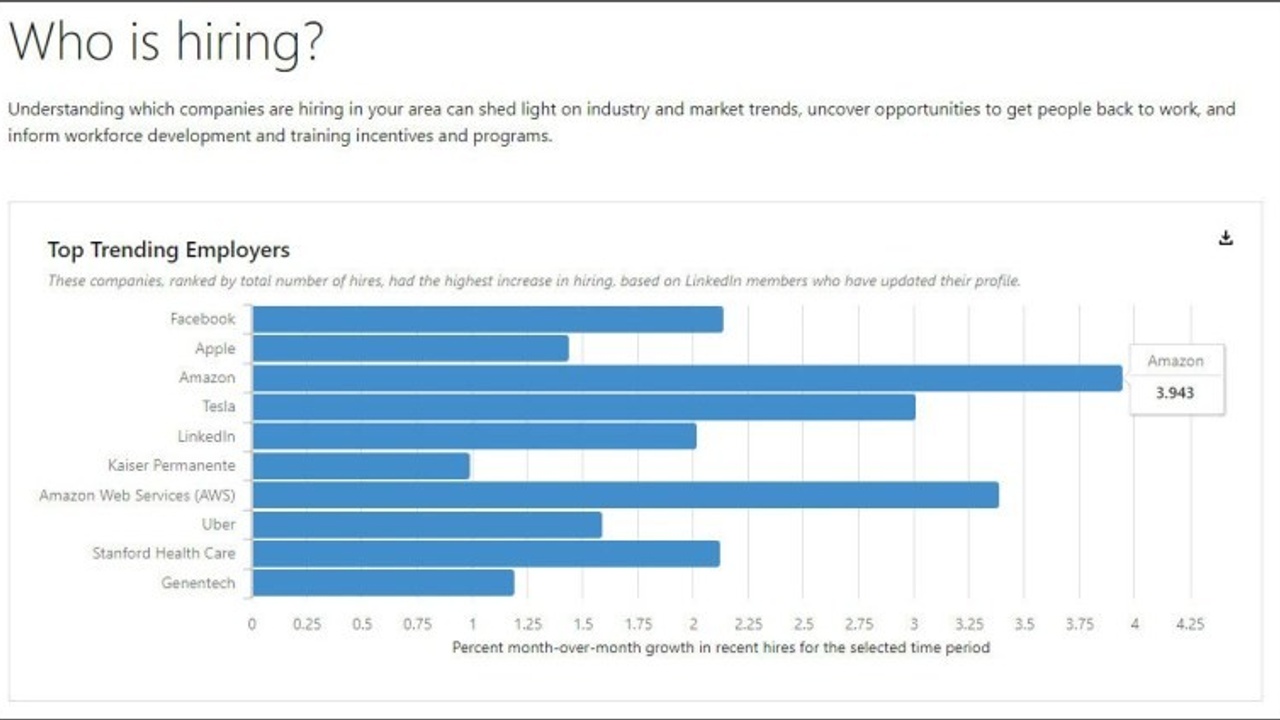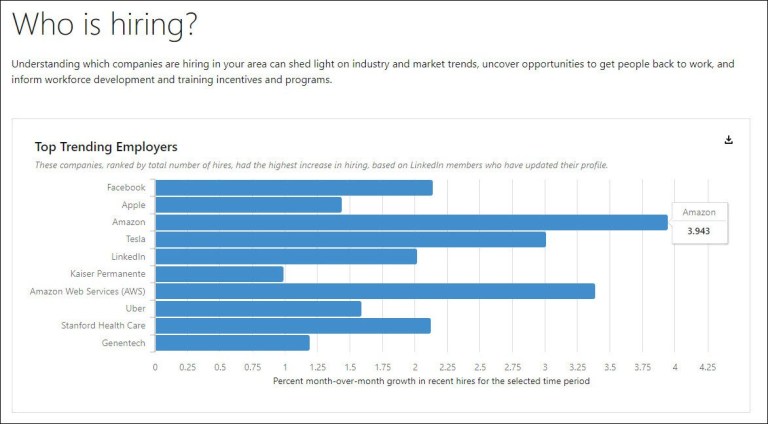Finding Clients in the New Economy
Jun 17, 2021
Before you laser target a niche and specific hiring managers, check out the big picture into hiring trends on job titles and skills taken from 690 million LinkedIn users, 50 million companies, and 11+ million job openings.
Knowing which jobs and skills are hiring gives you insights into getting consulting clients.
You want to search in niches with high-value opportunities and high need. The LinkedIn Economic graph is a great way to get quickly get a view of the landscape in your geographic area.
Change Means Work for Consultants and Independents
When companies reduce costs, consultants and independent professionals are often some of the first go. Still, where there is uncertainty and change, there is a need for consultants and interim professionals. This article will show you one way to find companies needing specific skills.
Change, good or bad, means work for consultants.
It would be great in these uncertain times to look deep into LinkedIn’s database and see the trends and demands for specific skills in regions around the globe. Why business change and change in hiring trends is important is that change drives the need for consulting and interim independent consultants.
Finding Change to Find Clients
If you want to find consulting clients, look where business and the economy are changing.
LinkedIn is much more than just a “Facebook” for business professionals. LinkedIn includes LinkedIn Learning and has recently added the Economic Graph. The Economic Graph shows changes in skills demand and hiring rates around the world. In some countries you can narrow your search to sub-regions like major cities.
The Economic Graph in LinkedIn can give you a big picture of what skills areas are changing and the regional impact.
To use the Economic Graph,
1. Go to Workforce Data
2. Enter your geographic region and month.

3. Check the graphs for skills, job titles, and regions that have opportunities.
Look for skills or job titles near your area of consulting. Look also for skills and jobs that are adjacent or support your primary skills. Any changes adjacent to your focus areas could indicate a need.
4. The Who is Hiring? graph shows the top trending employers on LinkedIn in the region. While this graph shows the largest employers use it to gauge what types of businesses or organizations are growing. For example, Amazon has a huge growth serving regions using science-based decisions and Sheltering-in-Place. That probably means that ecommerce or larger retail businesses that must move into ecommerce will also have the same hiring needs. Go there!

5. The What Jobs are Available? graph shows they job titles and roles being hired. Look beyond the specific jobs shown here and think what it means. For example, hiring of Product Managers and Sales could mean that there is a need for copywriters and digital marketers that the Product Managers and Sales will need.
You will want to use these Job Titles in more detailed searches when you are looking for specific clients and the hiring manager. Another blog/LinkedIn post will describe how to use Job Titles and skills to find specific people.

6. The What Skills are Needed? graph shows not the job title, but the types of skills needed. These are excellent criteria to use for further searches when we use techniques to find the exact company and person you need to approach.

Remember that consultants and interim professionals are needed where there is change – good change, bad change, new risks, or new opportunities.
Think of yourself as a doctor in a triage unit.
Any skill and region with major hiring trends, up or down, will have opportunities for consultants and independent professionals. For example, any change in the economy, competition or consumer psychology demands a strategy pivot. That’s a job for strategy consultants and facilitators. Increases or reductions in workforce demand HR compliance and strategic job analysis.
Using LinkedIn’s Economic Graph as a Job Treasure Map
LinkedIn’s Economic Graph uses global data from 690 million members, 36,000 skills, 50 million companies, 11 million open jobs and 90,000 schools to track job trends, skills migration, and hiring rates.
You can use the Economic Graph as a treasure map to identify which “islands” have the biggest treasure. A following post will show you how to find the palm tree on the island where the treasure is buried. (I know it’s corny but I like visual metaphors.)
These graphs are about skills and job trends. As a consultant or independent professional, you probably do not want full time employment. But, after 30+ years as an independent I’ve learned that,
Where there is change, there is need for consultants and interim professionals!
Here is one approach to finding where your skills are needed (in the course Starting and Building a Thriving Consulting Business we go into multiple, deeper client finding approaches),
1. Identify your primary skills and adjacent skills.
For example, as an HR consultant you might have experience in hiring, onboarding, new manager training, and compliance. Each of these is an adjacent skill that companies going through growth need. As we will see in later posts, the service industries are currently hiring massive numbers of people to support delivery services. Guess what these expansions need?
2. Use the Economic Graph to find skills sets with the fastest rates of change in your targeted industries.
For example, rapid increases in app developers may also mean a need for onboarding and new-hire training, and new product development and marketing.
3. Now that you have a big picture from the Economic Graph it is time to begin find specific companies needing you and the specific hiring people you want to engage with.
Learn More in the eBook on this Topic:
Getting Consulting Clients Quickly